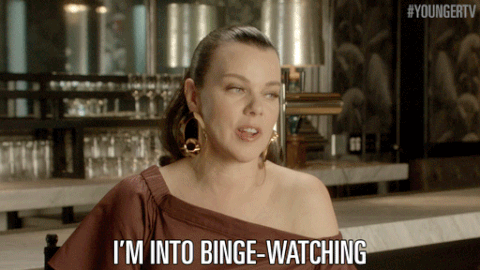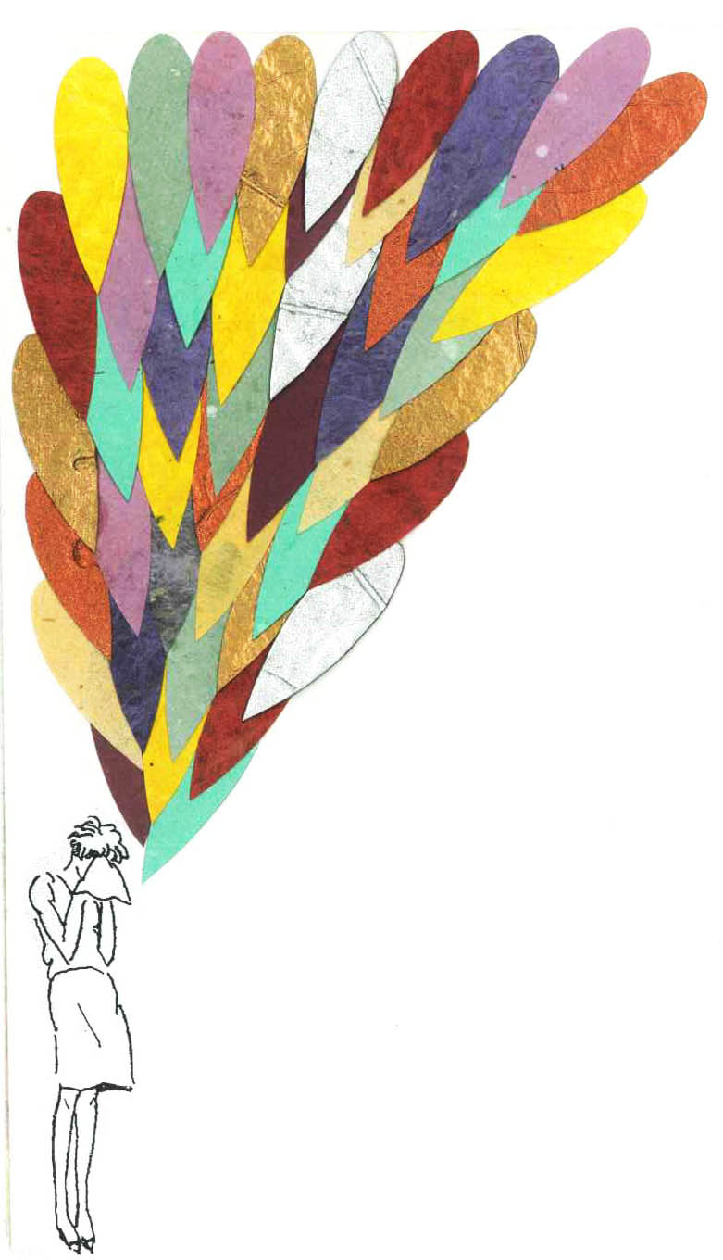By Rasa Estee - 27 October 2023
---
I know from experience that this approach works for me for over a decade, but I still forget. You see, while it's been the more effective approach for me, contrary to expectations, the path of softening with pleasure when the going gets tough isn't necessarily that much smoother than toughing it out.
Well, to be fair, many things have made me forget this life lesson in the past. This time around, those things are joint pains and depression. This was also the main causes for my absence and zero Lush Letters editions throughout the month of September. I'm sorry for the silence. And I mean it. It's not much but here I am trying to make it up to you with extra Turn-On Sessions for November and some transparency.
THE WHY
As a bit of context and background, I should mention that I was a former when-the-going-gets-tough-the-tough-gets-going kind of person. (And I used to think this phrase means to "push through no matter what.")
In my 20s, I worked as an activist at the then largest grassroots environmental network in my country. I only left due to back injuries, depression and burnout. In my 30s, I built a completely new life in a new part of the country, managed two international festivals; two now-defunct start-ups; plus held yoga classes for 5 years at the largest yoga center in Bali.
Now in my 40s, I'm, once again, re-building my life and work in another part of the country - largely thanks to the global pandemic.
All I'm saying is that I'm no stranger to having to have to get tough when the going gets tough. (Been there, done that, and got the t-shirts.)
I should also mention that I had been living with severe to acute perimenopause symptoms since late 2018. And after a VERY long road to diagnosis, I've now been on HRT (Hormone Replacement Therapy) for over a year to considerable success -- out of the previous thirty something, I'm now down to only 2-3 symptom (joint pains , low mood, and brain fog).
So, while I'm lucky enough to be able to keep tweaking my treatment plans to address these remaining symptoms, when the going gets tough for me these days looks like me living through extended periods of flare-up.
They reduce my functioning capacity: makes hand-writing, typing, and weight training quite limited due achy arms and fingers, and knock me off of my wagon of healthy habits that are foundational to my daily functioning plus managing and preventing flare-ups in the first place.
(By the way, I call these habits -- personalized eating, sleeping, movement, connection, pleasure, and creativity routines -- healthy simply because they are FOUNDATIONAL for ME to be able to enjoy living and being of service in ways that I'd like to.
You know, I'm not here to preach about productive habits to help you hustle more or lift yourself up by your bootstraps. That's just NOT how WE roll around here.
While declining hormone production is a natural thing, perimenopause and menopause symptoms are NOT something to endure. Education, de-stigmatization and comprehensive healthcare and workplace support are essential in changing this notion. Speaking of which, October is World Menopause Month!)
THE STRESS (NOT THE STRESSOR) IS MY ACHILLES HEEL.
This time around, I did remember to not "push through". Instead, I took stock of what was going on, scaled back to rehab movements, intentionally rested plus apply the pleasure-based tools I know with the aim to get back to the helpful habits that would give me all the feel-good stuff I need to alleviate the aches, low mood and fog.
I acknowledged my sadness and frustration and intentionally comforted and consoled myself with my favorite past-time of watching TV series and films. But, the aches and low mood persisted. I couldn't get on top of my habits and fell into a dopamine-seeking rut of binge-watching. And that just means lower-quality sleep = lower energy to exercise = lower sources of the "feel good stuff" = lower mood and more aches.
In the midst of all this, my mind would occasionally brought my focus back to my predicament as a mean to raise the alarm. But I was feeling hopeless and stuck because I felt like I've identified all of my stressors and applied the needed tools.
In my mind, I was saying that I've successfully avoided past patterns of "pushing through" and that I'd "softened enough" with what I'd done so far.
My mind also said that I was a lot sadder than I'm willing to admit and that I need to do a specific practice and process through it as the consolation had turned into a dopamine-laced escape. But the wheel kept turning and I kept a deaf ear to these alarm bells.
So, I knew what I needed: complete the stress cycle to release the accumulated emotional and physical stress from my body/mind. But the dopamine rut was too tempting, so I kept opting for escape.

COMPLETING THE STRESS CYCLE BY GETTING SOFT WITH PLEASURE
After years of inner work and personal development, I learned that I'm pretty good at identifying stressors (the sources of stress) plus coming up with and applying solutions to them.
What I've been improving on is to QUICKLY remember to complete the stress cycle. Compounding unresolved stress had exacerbated injuries, depression, burnout, and many health challenges I had in the past. I've definitely gotten heaps better at this compared to how I was in the past, but I do have my moments. *Sigh
Regular movement and exercise, nourishing connections with people are wonderful ways to complete the stress cycle by bringing in the "feel good" chemicals (endorphins, oxytocin, etc.) that tells our nervous system that we're no longer facing a threat - allowing it shift from its "fight and flight" mode back to baseline.
When I'm in pain and mostly at home due to flare-ups and these two ways aren't readily available to me, I often resorted to a form of cathartic pleasure practice that I learned during my studies and gradually customized to suit my needs (and my clients').
WHAT'S IN THE WAY OF SOFTENING WITH PLEASURE
Softening with a cathartic practice involving pleasure might sounds pretty good to you. It sounds milder and certainly not as stressful as toughening up and pushing through things, right?! You're not wrong to assume so. It's just that it doesn't necessarily mean that you'll gladly do it and not face any internal resistance.
You see, this practice has two parts: intentional emotional catharsis and nervous system regulation with pleasure.
Firstly, a lot of us are just not up for intentionally holding and meeting our uncomfortable feelings and emotions, AND thoughtfully allowing our bodies to express them for the purpose of catharsis.
Personally, I think this is due to a number of things: our brains' negativity bias plus the societal and cultural narratives that diminishes the value of human emotions.
With its negativity bias, our brain is superb at identifying potential threats to our survival. Unfortunately, it can't tell the difference between a sabre-tooted tiger and anything else that have long-been considered more of a threat in this modern times.
Now, if, like me, you grew up around (and still living with) messages that brand our human emotions as "too much", embarrassing, wild, and even dangerous, well that's what our brains retain. So, it's no surprise when the idea of having and intentionally expressing emotions could register as a potential threat causing our nervous system to dial up its fight or flight mode. As a result, emotional suppression could become the go-to for us, instead of a thoughtful choice.
You see in my case, I thought I started with acknowledging my emotions and opting for comfort and consolation by watching some shows on TV. Now, let me be clear. Giving ourselves comfort and consolation if they really fit our emotional needs are LEGITIMATE coping mechanisms. But as my body aches and mood worsened, it slipped into binge-watching -- a classic avoidance and distraction tactics in my personal emotional-suppression arsenal.
What I needed was a more body-related approach where I hold a safe time and space to face my emotions head-on, express them with my body for catharsis, and then soothe my nervous system back to safety with pleasure. Thus, finally completing the stress cycle.
Secondly, and unfortunately, much like emotions, there are still so much negativity directed at the value of human pleasure, especially the sensual and sexual kinds.
So, a similar message gets registered in our nervous system: practicing pleasure is not safe (so let's just not do it). (This is also why so many of my clients were so surprised when they encountered massive internal resistance to doing pleasure-based tools and practices.)
Luckily, we also know that thoughtful and regular practice plus consistent support can increase our capacity in tolerating discomfort and regulating our emotions and nervous system. And we'll also get to remember what needs to be done quicker if/when a similar stressful situations take place in the future.
In short, I had a miserable flare-up of symptoms, and it kicked off an outdated pattern of emotional suppression that sank me deeper into avoidance and inactivity. I got an inkling that I needed to soften more when things were extra tough but it took me some time to get there.
Later, I finally got myself to do the needed practice ONCE, and then got clear enough in my head to establish more support for myself. And so, I began to get going.
I reached out to a friend from across the world (Love you and adore you, A!) to set up weekly video calls for a supply of regular connection for the following few weeks. I slowly improved sleep and other needed elements. Things didn't change in an instant or anything but things were shifting. They were finally going...again.
And now, here I am writing to you.
(In case you're wondering, I do share these cathartic pleasure-based practices in my programs and Turn-On Sessions when it applies. So, if you feel like you might need support to soften in your tough times, please book your sessions below. One-time donations to these non-profits starts at around US$5-10!)
(Also, since softening is in the air, in the next edition, I'll also share with you how I recently won at Instagram comments with softening.)
As always, thank you for your patience at hearing me out.
It means the world.
-Estee
---
This is an edited version of On Point section from Lush Letters #07 published on 02 October 2023 titled "When The Going Gets Tough, The Tough Gets Soft With Pleasure (to get going again)".
Image credit: Hiks!, 2010. Manual Collage. Art by Vantiani

